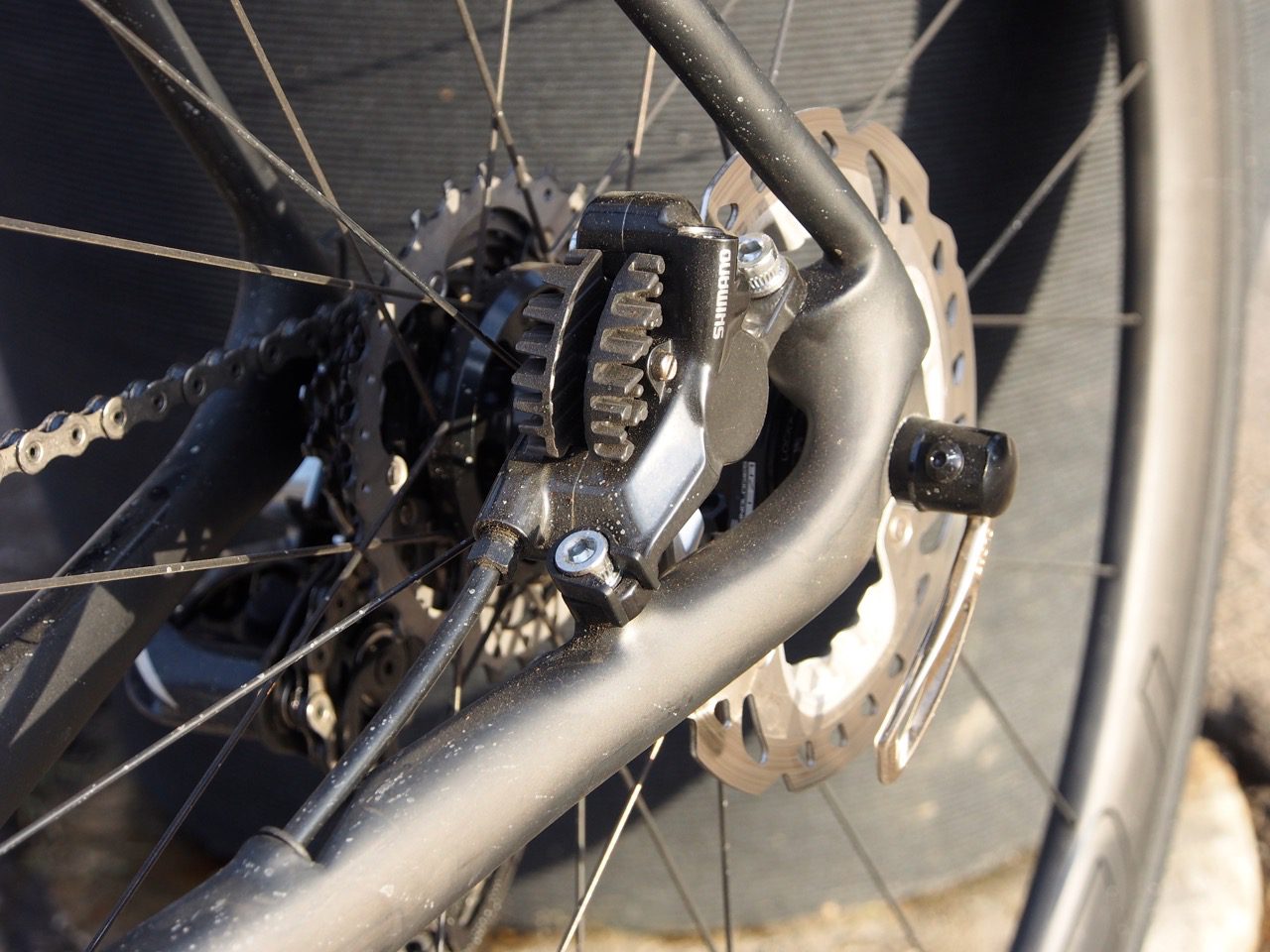Ryder Hesjedal and Michael Barry on the dangers of disc brakes in the pro ranks
Both former pro Michael Barry and Trek-Segafredo team member Ryder Hesjedal spoke out against the technology that was being tested by WorldTour cyclists

As the story of Movistar’s Fran Ventoso’s disc-brake-related injury developed earlier this week, other pros weighed in on the technology being testing in the pro peloton. At Paris-Roubaix, Ventoso was involved in a crash. “I didn’t actually fall down: it was only my leg touching the back of his bike,” he wrote. The contact was enough to cause a deep gash in his leg.
Both former pro Michael Barry and Trek-Segafredo team member Ryder Hesjedal spoke out against disc brakes on Twitter. I then contacted them to hear more on the subject. Hesjedal, a former mountain biker, is no doubt comfortable with the technology. Barry now builds Mariposa bikes. His company’s cyclocross bike has disc brakes.
“Braking in CX and mountain biking is entirely different to the road,” Barry said. “The courses, mud clearance and braking in adverse conditions are all factors. Also, you’re not dealing with the same speeds and as many riders bunched closely together as in the pro peloton.”
Hesjedal, who will be riding at Amstel Gold on Sunday, not only said disc brakes are not appropriate for the pros, but even amateurs in big groups. “With a sportive, it’s the same issue,” Hesjedal said. “It’s about a bunch together. If there’s a potential for a peloton-type crash, then yeah, disc are an added danger.”
Barry, who is involved with Association of North American Professional Road Cyclists (ANAPRC) a group that represents the needs of pro cyclists, said he voiced his concerns in early 2015 when talk of disc brakes in the pro ranks started. “In the peloton, it is very frequent that riders get hit from other riders’ wheels and quick releases in a pileup. There are often bottlenecks in the road when one rider goes down, which causes riders to pile into each other. Riders will have tire-burn marks on their calves or scratches from parts. The discs are bloody sharp so instead of burning, they will cut.”
But there are other sharp spinning things on a bike. I pressed both cyclists about spinning spokes and chainrings. Aren’t they a danger? “Spokes are sharp, but not as sharp and are protected by the rim and wheel,” Barry said. “Chainrings are at the centre of the bike so less likely to injure in crashes. Quite often, in high speed crashes where injuries are more frequent, the chain is on the big ring so less likely to cause severe wounds.”
“I don’t know how many times I’ve been bumped from behind by somebody’s front fork,” Hesjedal said. “In a slow, little pileup, you get a hit from the front fork. It hurts, but it doesn’t flay your Achilles. A rotor is a hot spinning blade protruding from the bicycle. I’d rather have the edge of the quick release and the front of a nice round carbon fork ramming into my Achilles and calf than a hot blade.”
I’d rather have the edge of the quick release and the front of a nice round carbon fork ramming into my Achilles and calf than a hot blade.
Both riders mentioned that disc brakes change the dynamics and flow within the bunch. The rotors are more powerful than rim brakes. “In the peloton, it’s always quick reactions,” Hesjedal said. “You always grab the brakes. Everyone is used to a certain way that things go. Then, if you have this different braking power, it just doesn’t work. The fact that you can be going down a descent in the rain, and half the guys have disc brakes and half don’t, that’s not going to work. You have to be able to operate on more or less the same plane.”
When I spoke with Hesjedal, he was clearly dismayed that disc-brake testing had come as far as it did before the UCI suspended the project on Thursday. “Disc brakes are great. That’s not the debate or the issue. It’s safety,” concluded Hesjedal.
Barry said part of the problem is that it’s hard for pros to speak out on safety concerns. “The riders have a weak voice and need to have representation on many issues,” Barry said. “The disc issue is only one of the many problems/concerns in pro cycling. ANAPRC is working hard for change and they have identified many of the problems.”
